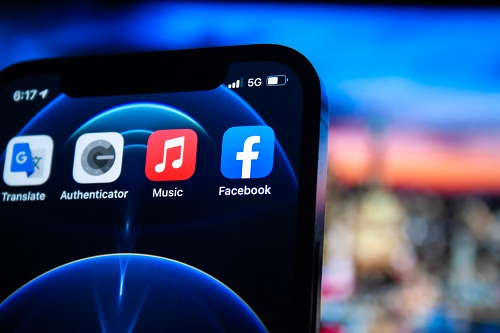For many decades, the telecommunications, media, and technology sectors have influenced how consumers and companies engage with one another – and this practice is unlikely to change anytime soon. As a result, it is critical for businesses to stay current with trends and properly integrate them into their business models and processes.
In this article, we will concentrate on telecom industry trends and discuss their impact on businesses in the future. Apart from 5G and one-shot learning, they also include ambient intelligence (AmI) and solutions such as all-in-one communication platforms or Technology-as-a-Service (TaaS), among others. Continue reading to find out how telecom developments will impact your business.
5G as the Gold Standard
The world is moving towards a 5G-based environment. Many global operators have officially launched 5G network services, and this trend will continue in 2022. The next-generation technology has a higher capacity and a shorter latency than 4G, so it will be used for more connections and devices over a wider coverage area.
In the future, 5G will become even more pervasive. It will connect people to the internet from anywhere and enable them to access products and services faster than ever from multitudes of connected devices. The key to success, in this case, is to utilize new technologies and applications that will leverage these new capabilities.
5G will change how businesses operate and position themselves in the market. For example, it will increase opportunities for first-movers and disruptors to use the technology to develop and offer new solutions and services. It will also create an entire ecosystem of new players who can provide different services for different parts of the value chain.
All-in-One Communication Platforms for Small Businesses
Small businesses are usually limited by their resources. They may not have enough time or money to develop new solutions or create new apps, which means they may need assistance from third parties. One way of solving this problem is to use an all-in-one communication platform to manage communications over multiple channels. For example, visit Weave to see how it could be used to deliver SMS notifications, emails, audio files, video files, and more.
Companies could use an all-in-one platform to develop a new app that would help them get in touch with their customers in many ways. In addition, they could also use it to create a website or a landing page that would allow customers to register for appointments or products. Thanks to such platforms, businesses can save time and money because they do not have to hire additional developers. Instead, they can focus on developing new solutions and services.
Ambient Intelligence Tools for Businesses
Some of the most exciting trends in telecommunications are those related to ambient intelligence (AmI). This technology is based on the concept of ubiquitous computing, which means that people will be able to access information and services anywhere, at any time. AmI is not only about improving the customer experience through machine learning but also about smart environments.
Ambient intelligence is closely linked to smart cities because it enables companies to improve data collection and management. For instance, IoT sensors can collect data from traffic lights, water pumps, heating systems, and street lights, while smart algorithms analyze this information and provide policymakers with a better understanding of the city’s needs and challenges. This way, they can develop solutions that will help them address problems and make the city more efficient.
Ambient intelligence will become even more prominent in the future because it will enable technology companies to create new solutions based on virtually unlimited data. For instance, they will develop virtual assistants to automatically identify what a user needs and offer relevant information or services. In addition, these assistants will learn from users’ preferences and patterns, allowing them to serve an individual’s needs better.

Internet of Things
The Internet of Things (IoT) refers to a worldwide network of connected objects that exchange data using internet protocols. These devices could be cameras, microphones, thermostats, or wearables, but they could also be ordinary objects such as refrigerators or roadways. The IoT connects everything from cars to home appliances to industrial machines.
In the future, the IoT will become even more prevalent. There are predictions that there will be over 29 billion connected devices by 2022. This technology has already started to change how we live and work in many ways; for instance, it can collect data from home appliances and use algorithms to determine when they should be turned on and off based on factors such as location and time of day.
Thanks to the IoT, governments, businesses, and individuals will be able to develop solutions that can help them save time and money. For instance, the technology enables intelligent traffic lights that control traffic flow depending on how many vehicles are on the road. It can also automatically adjust air conditioning depending on the number of people currently in a room and the average temperature.
However, it is important to understand that IoT is still a relatively new technology. It is continuously evolving and refining itself, and this means that it may be difficult to predict how it will impact businesses and individuals in the future. This is why organizations must stay current with developments and engage with partners who can advise them on their IoT strategies.
One-Shot Learning
One-shot learning is a machine learning technique that allows computers to learn from a single example or at most a few examples instead of hundreds and thousands of them. In other words, it helps them recognize objects even if they have never seen these objects before. For instance, a one-shot learning model could be used to identify a cat in a photograph.
One-shot learning can also be used for object detection and classification and image recognition and segmentation. Thanks to the progress made in the field of deep learning, this technology will likely become even more prominent in the future.
Some researchers say that algorithms will eventually be able to rival human perception and cognitive capabilities. This will create a new generation of intelligent systems that will help businesses make better decisions and increase their profits. However, it is important to note that the current state of the technology means that it is still not as accurate as human perception.
Technology-as-a-Service
Technology-as-a-Service (TaaS) refers to the use of software as a service (SaaS) as well as Platform-as-a-Service (PaaS) to deliver services and applications as a cloud service. In other words, it is a way to rent software or applications as a service and the infrastructure needed to run them.
Thanks to TaaS, all organizations can gain access to technology without having to invest in it themselves. This saves time and money because businesses do not have to purchase equipment, install software, or maintain and upgrade it. As a result, they can focus on delivering new products and services that will help them gain more profits.
TaaS is currently already available, but it will likely become even more prominent in the future. It is also worth noting that the technology has started to gain traction among small companies because it makes it easier for them to offer solutions at lower costs.
In Conclusion
As you can see, telecom-based technologies have a profound impact on businesses around the world. They can help organizations to deliver solutions that improve their customer experience and increase their profits. In the future, these solutions will only grow more potent as technologies such as 5G become more widespread.
In addition, new tools such as ambient intelligence will allow businesses to interact with customers and employees across multiple channels easily. This will also make it easier for organizations to develop and deliver new products and services that will help them gain more profits.





















